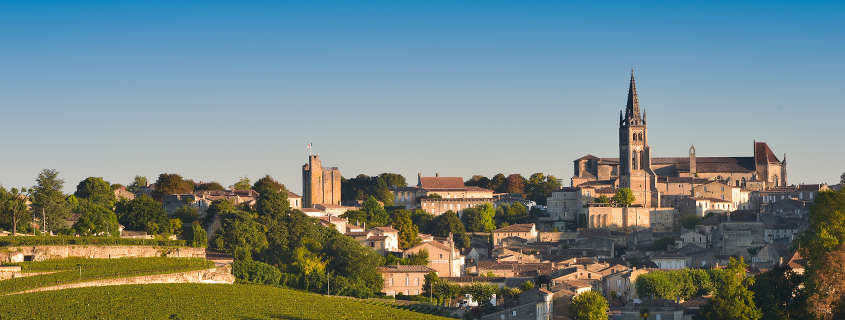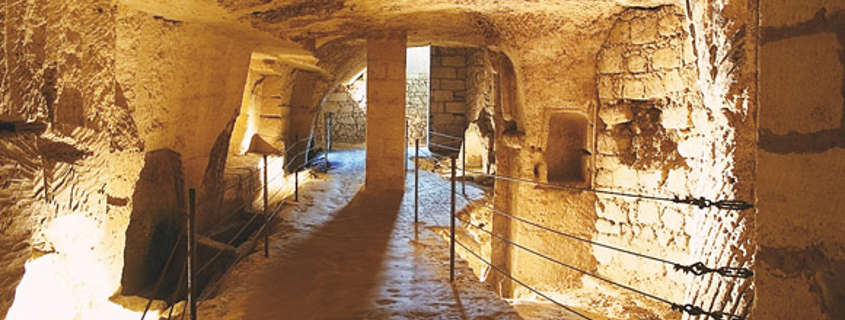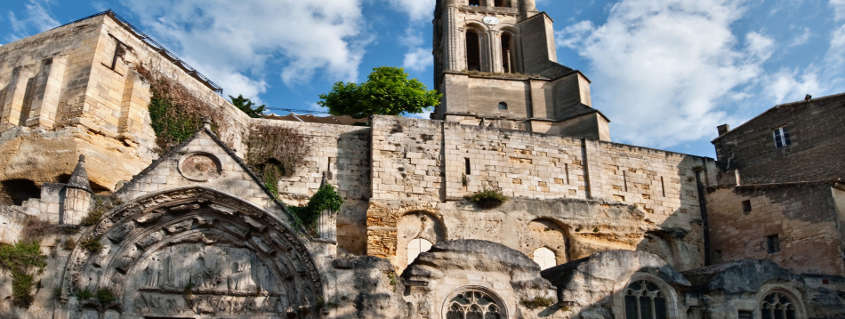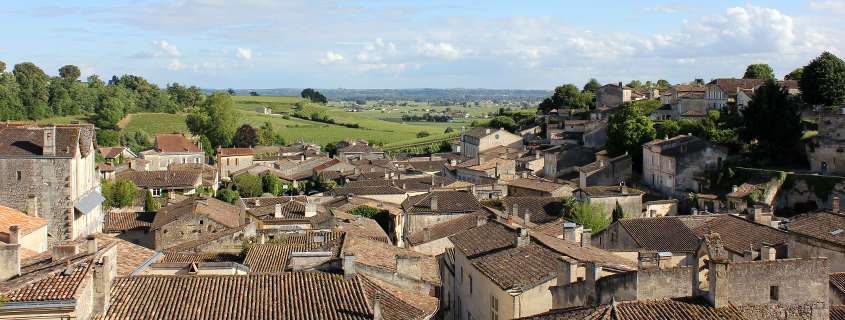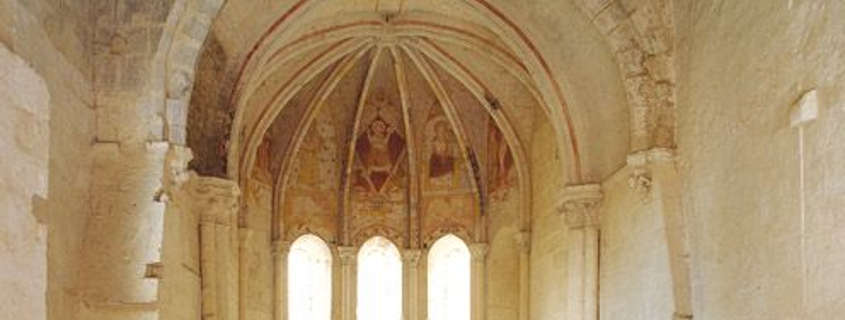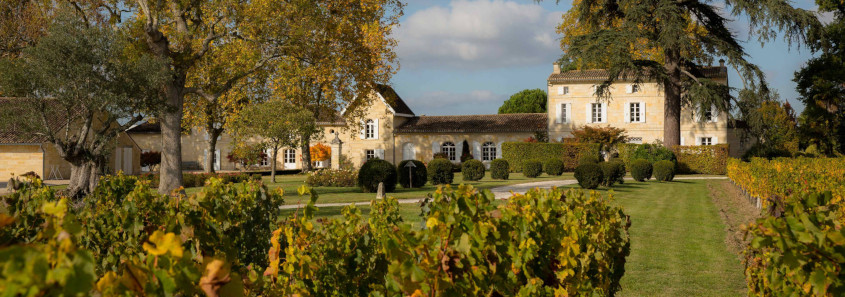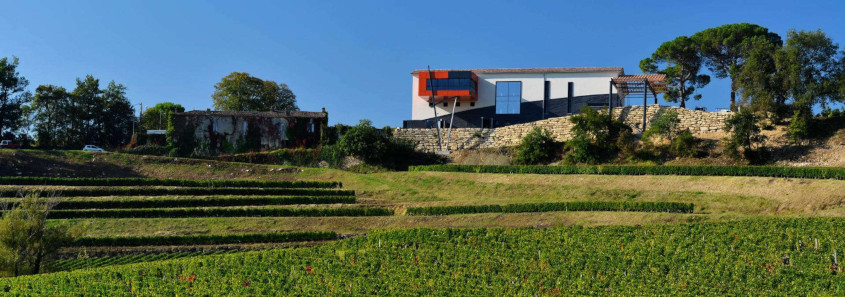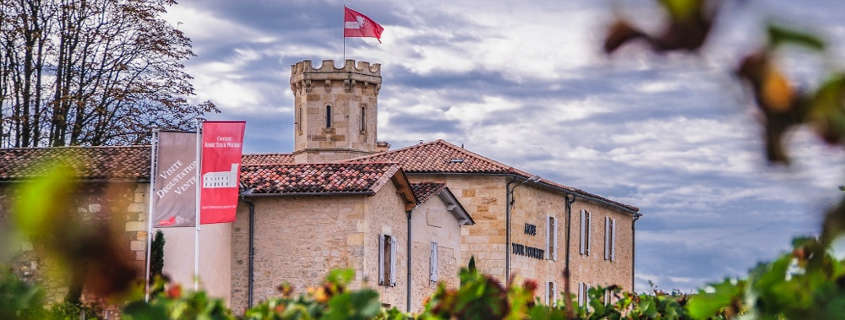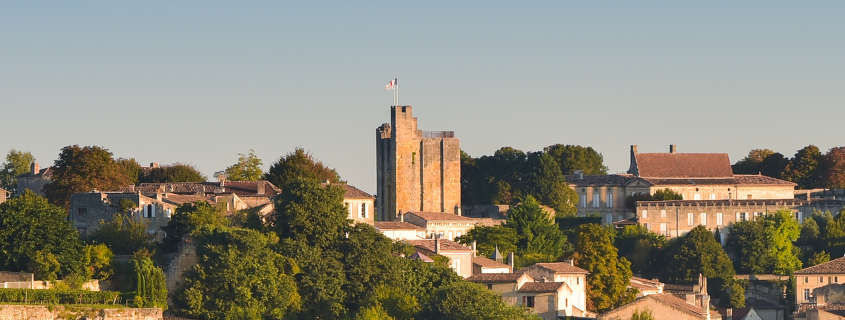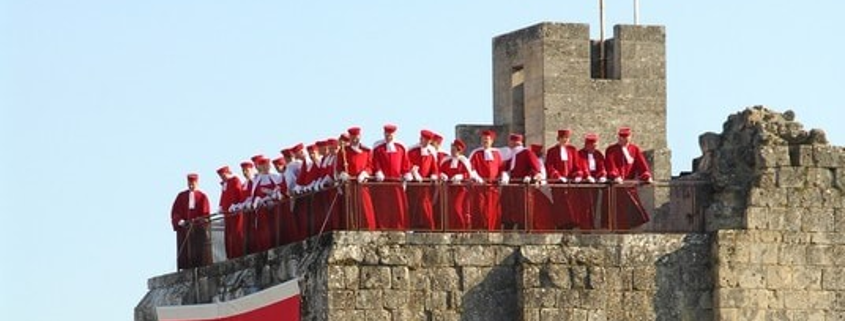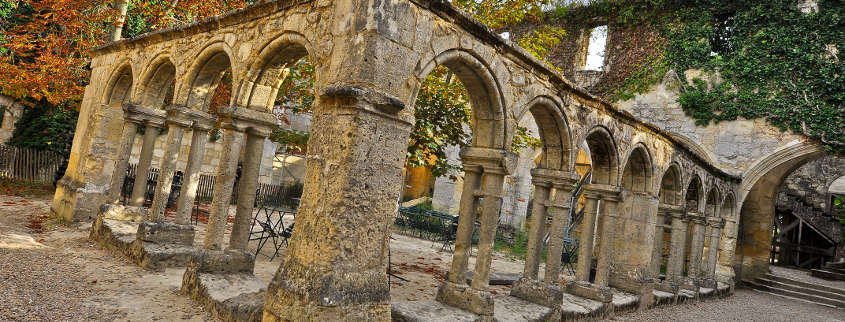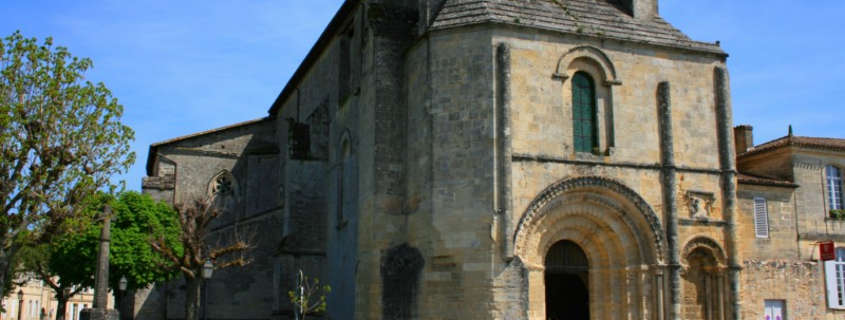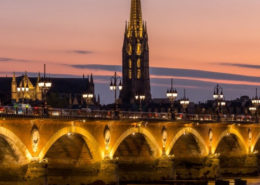Best things to do in Saint Emilion, France
Located at 45 minutes East by car from Bordeaux in France, Saint-Emilion is a small well-preserved medieval town, famous for its prestigious red wine, its notorious appellation with Grands Crus Classés and for its magnificent chateaux and vineyards.
Saint-Emilion’s village has been inscribed on the UNESCO World Heritage List for its unique historical and viticultural landscapes. Saint Emilion old town is really charming, and it is pleasant to enjoy a walking tour or an underground tour to discover its historical richness. The best time to visit the city is during summer (July, August) as you will enjoy the sun reflected over this honey-colored city and over the vineyards all around. You may also take advantage of the sun to enjoy a visit to Saint-Emilion wine producers or explore other nearby Bordeaux wine houses to get familiar with the local culture. If you have time, don’t forget to experience Bordeaux itself, a city renowned for its own wine heritage and vibrant culture.
If you plan to travel to Saint-Emilion, discover here what to do.
Map of Saint Emilion
Go directly to the section of your choice : The medieval city, Undergrounds and Catacombs, Monolithic church and chapel of the Holy Trinity, The vineyard of Saint Emilion, King’s keep, Cordeliers cloister, Collegiate church.
The Medieval City
To start with, you can walk around in the medieval city and discover its small winding streets called « Tertres », its cobbled squares and its ramparts. The village is located on a limestone plateau and is mainly built from the extracted stones of the plateau. This explains the 200 kilometers of underground galleries in the region, which provided the needed limestone for the construction of several buildings in the region, including the city of Bordeaux. You will find many vestiges of the Romanesque period. The streets are lined with restaurants and shops selling wines of Saint Emilion, macaroons and other gastronomic specialties of the village.
The Medieval City © saint-emilion-tourisme.com
Undergrounds and Catacombs
Undergrounds © saint-emilion-tourisme.com
Discover the underground heritage and immerse yourself in the heart of the limestone.
Visit the Hermitage Cave, a simple cave around which the village of Saint Emilion was built and the former house of the monk Emilion, founder of the city. Dug into the rock, this cave still retains the furniture of the Saint such as his bed and table carved into the rock and his armchair. It also has a source of water, which Emilion would have used as a baptismal font and which is still flowing today. Many legends and miraculous stories are attributed to this place. For instance, the Emilion chair has become the « Fertility Seat » and attracts women all around the world who come to sit and pray to get pregnant.
Hermitage Cave Saint Emilion © laroutejoyeuse.fr
To continue your visit underground, immerse yourself in the dark and funeral world where the sarcophagi reign. Adjacent to the church, the catacombs were dug before the year 1000. They have remarkable elements such as galleries decorated with wall decorations and a tombstone on which is engraved an epitaph that shows the presence of the relics of Saint Emilion. To continue in the underground part of the city, immerse yourself in the dark and funeral world where the sarcophagi reign. Adjacent to the church, the catacombs were dug before the year 1000 and have kept their mysterious and sinister character. You will discover galleries decorated with wall decorations and a tombstone on which is engraved an epitaph that shows the presence of Saint Emilion’s relics.
The Catacombs © aquitaine.fr
Monolithic church and chapel of the Holy trinity
The monolithic church is undoubtedly the flagship building of Saint Emilion. This is the largest underground church in Europe and the most emblematic picturesque site of the city with the cloisters of the Cordeliers. This underground religious building was dug into one single block of stone at the end of the 11th century by the Benedictines. You can also climb on its 68m high steeple to enjoy an impressive view of the city and its vineyard. There is also another very pretty point of view on the village and its vineyard from the square where the monolithic church is.
Monolithic church © laroutejoyeuse.fr
Located at few meters away from the monolithic church, the chapel of the Holy Trinity, built in the 13th century is designated historical monument. Inside, the building is decorated with particularly well-preserved frescoes and medieval paintings. Reshaped at different times, the chapel shows and represents the evolution of construction techniques at the beginning of Gothic art.
La chapelle de la Trinité, Saint Emilion © aquitaine.fr
Saint Emilion vineyards
Located in the heart of the famous Bordeaux vineyards, Saint-Emilion gathers all the ideal conditions for wine production. The omnipresent limestone offers Saint-Emilion’s vine exceptional soils. In addition, its terroirs offer a great geological diversity and a microclimate perfectly adapted to viticulture. Thus, the professionals provide a meticulous care to the vine and ensure a clever blend of grape varieties, of which the Merlot is the dominant one. All reunited conditions make a perfect trip to visit Saint-Emilion wineries as you will be able to discover wines of exceptional quality and variety, with olfactory and taste nuances particularly appreciated.
Vineyards close to Saint Emilion
Château Jean Faure is a Grand Cru Classé on a human scale. Certified organic since 2017, the owners have adopted a biodynamic drive to stop using pesticides. There, you will be able to visit the park of the castle, the cellars of vinification and to taste various wines. You will understand how to produce a classified Grand Cru and the environmental approach of the owners.
Château Jean Faure, Grand Cru Classé, Saint Emilion
Combine tradition and modernity by going to Château La Croizille. You will indeed visit 2 wineries of the De Schepper family on the Saint Emilion appellation: The Château Tour Baladoz and its authentic and traditional cellar and the Château La Croizille and its cellar at the forefront of modernity. This area with modern architecture offers different options for tours and tasting: picnic, oenological workshop, afterwork terrace…
Château La Croizille, Saint-Laurent des Combes, Saint Emilion
Organic wine lovers will be delighted to visit Château Bernateau. Located at 10 minutes’ drive from Saint Emilion, in the town of Saint Etienne de Lisse, this area explains in a user-friendly manner and very instructive way the stakes and characteristics of organic viticulture. This family-owned winery produces its wines using this method and offers an entire visit and tasting tour of 1h30.
Château Bernateau, Saint Emilion Grand Cru
For a unique meeting, go to Chateau Mauvinon, also 10 minutes’ drive from Saint Emilion. Brigitte, the owner of the chateau and winegrower will do the visit herself and you will discover her working environment. Welcoming and very passionate, you will live by her side a moment of unique and fulfilling share during a free tasting visit of one hour.
Château Mauvinon, Saint Emilion Grand Cru
Finally, if you want to go beyond a simple visit and tasting, the Chateau Ambe Tour Pourret offers more specific activities such as wine and food pairing tastings, gourmet picnic basket or lunch at the chateau. This vineyard is recognizable thanks to its iconic tower. You can walk there in 15 minutes from the center of Saint Emilion.
Château Ambe Tour Pourret, Saint Emilion Grand Cru
For those who are looking for a nice and little family owned-winery, go to Chateau Clarisse, located at 10 minutes’ drive from Saint Emilion, in the village of Puisseguin. There you will taste red wines of a good value for money, regularly rewarded in famous French specialized guides (Revue du Vin de France, Bettane & Desseauve, Hachette). You will discover the winery and its history during a fulfilling visit.
Château Clarisse, Puisseguin Saint Emilion
King’s Keep
The King’s keep, located inside the ramparts of the city, is a big dungeon that remained intact since its construction in the 13th century. It was used at the time as a communal defense citadel until the end of the 16th century. It is based on an isolated massif, excavated in natural caves and Middle Ages exploited quarries. The tower is protected on three sides by a ditch. Its fourth face has an underground cavity that allows to access it.
A splendid panoramic view of the surroundings of Saint Emilion awaits you from the top of the tower, 32 meters high, after having climbed 118 steps.
King’s keep, Saint Emilion
Jurade on the king’s keep © saint-emilion-tourisme.com
At the beginning of the 13th century, the Franciscans (known in medieval France under the name « Cordeliers » because of the rope they used as a belt) came to settle in Saint Emilion. At the end of the 14th century, they were given permission to build their convent composed of a church, a garden, an entrance courtyard, a cellar, an ageing cellar and a cave. This cloister was abandoned during the revolution and covered with vegetation. It has become now a sparkling wine production place and welcomes visitors for a historic and oenological visit. You will see its imposing ruins, romantic garden and deep underground galleries.
The Cordeliers cloister © pinterest.com
The Collegiate Church
This imposing church with a mostly Gothic style was built in the early 12th century. It incorporates some Romanesque elements such as the nave with three bays dating from the 12th century. It is interesting to see its mural paintings of different periods and the remarkable organ it houses. Today, it is the parish church of the city, and concerts are held there. You can also visit the cloister attached to the church and the garden.
Collegiate Church © gite-saintemilion.fr

